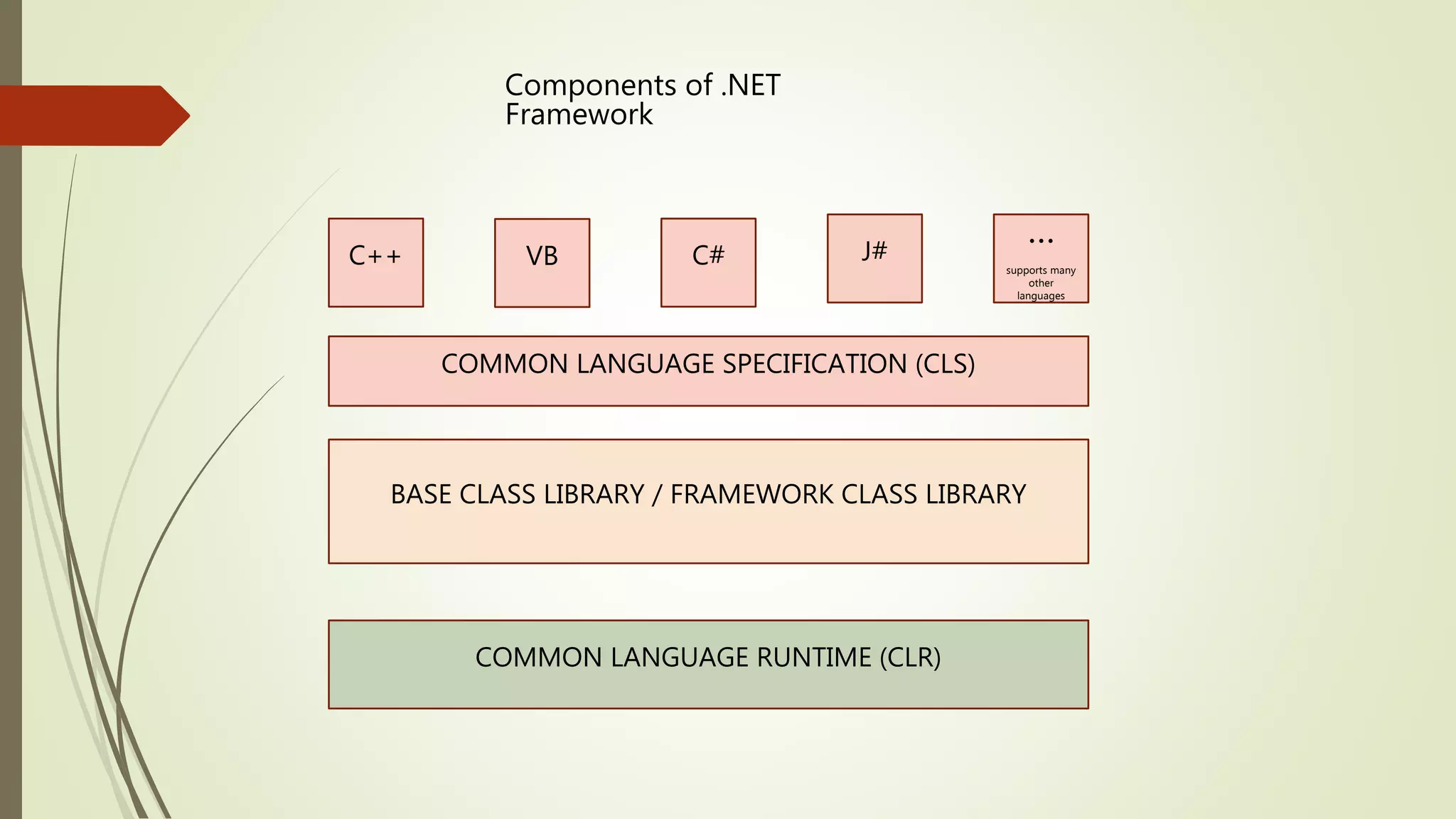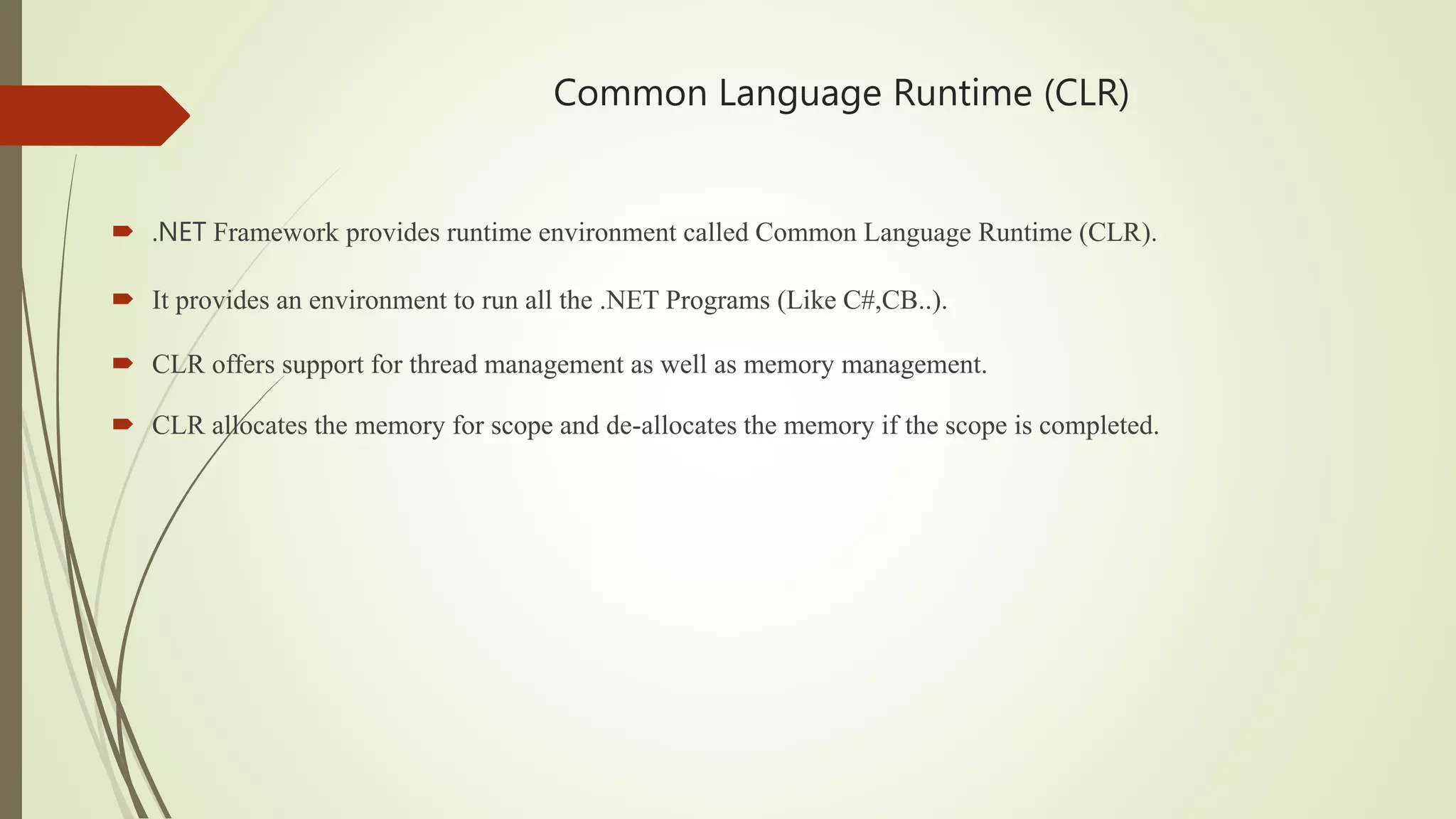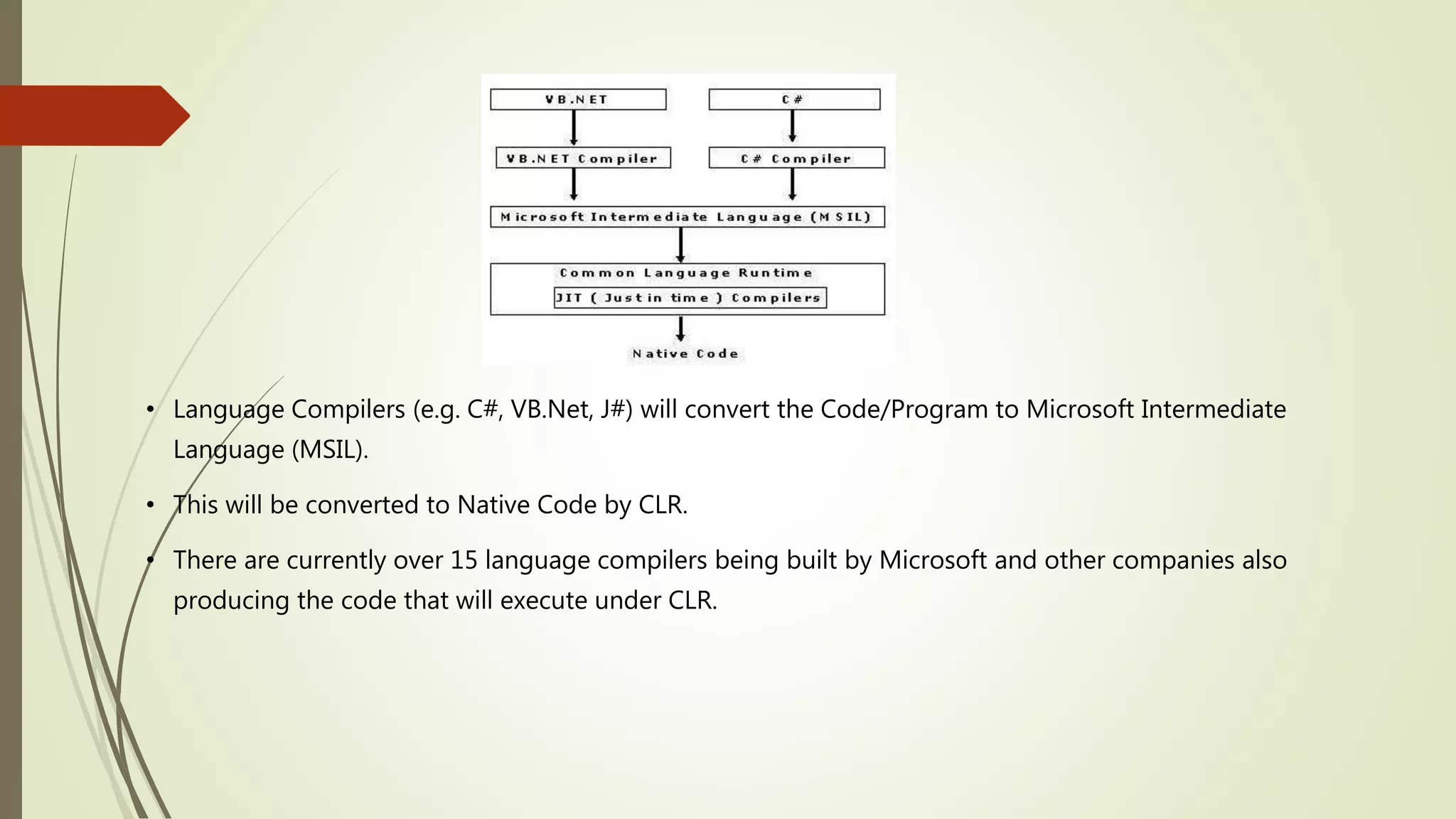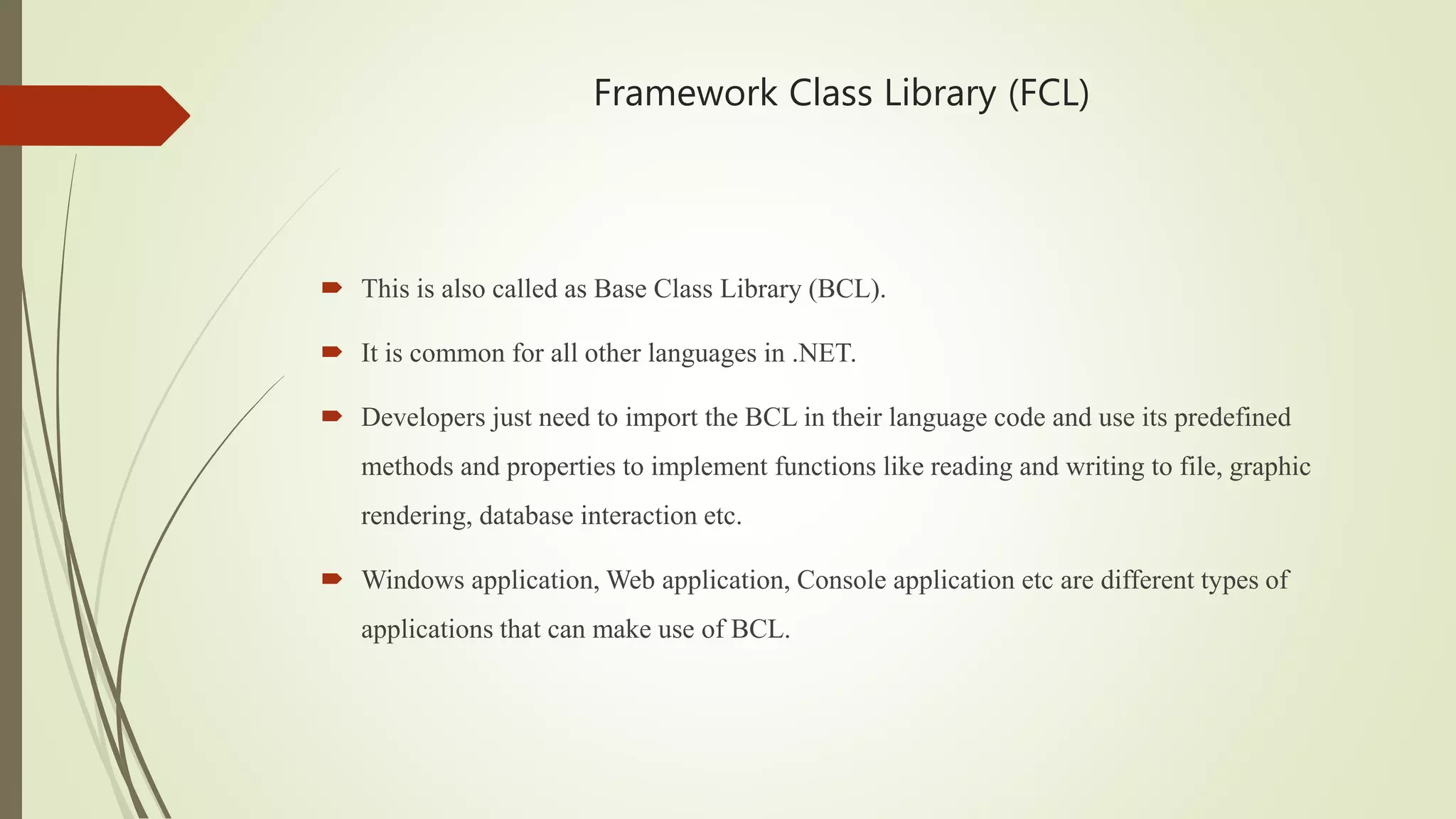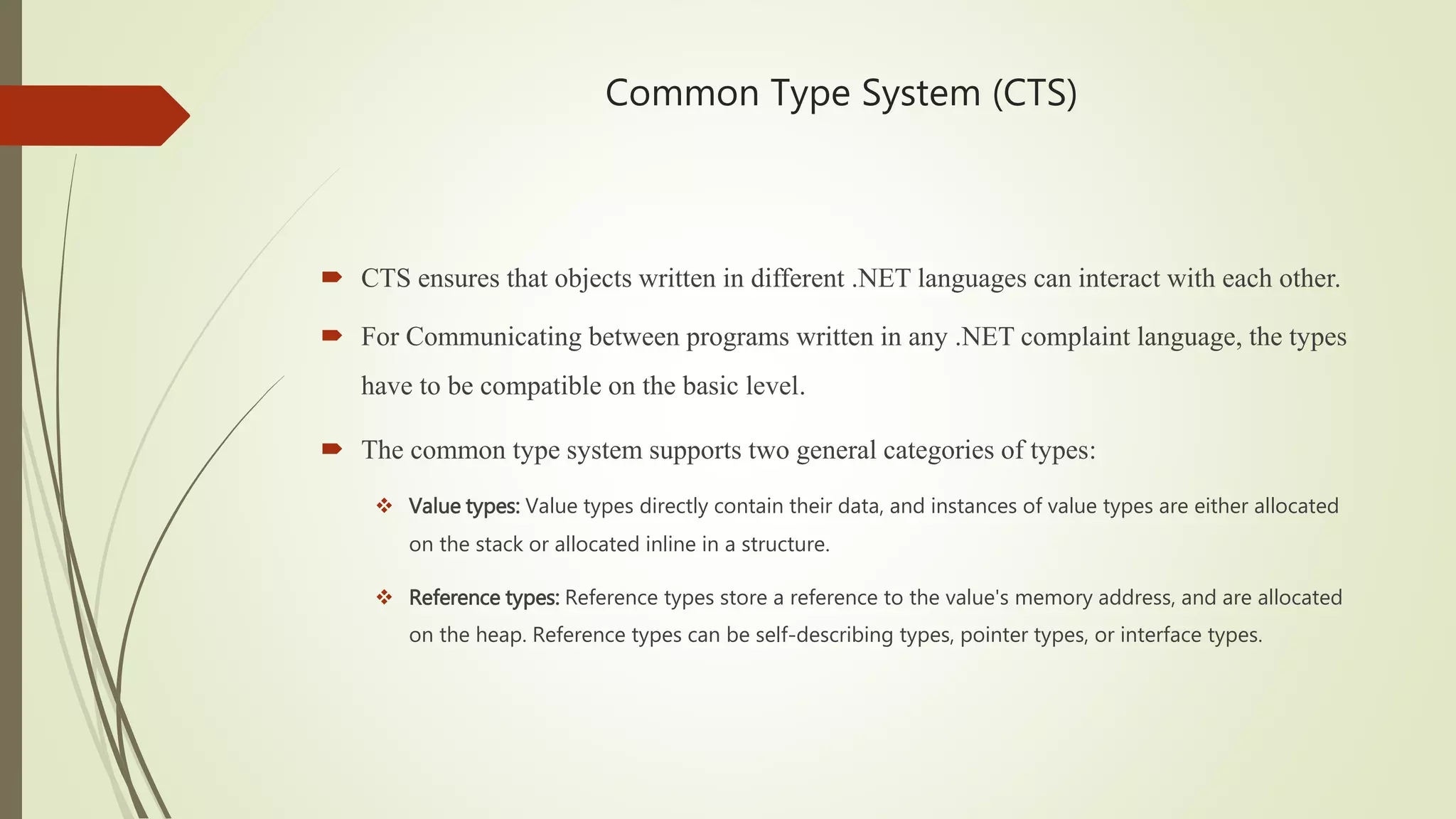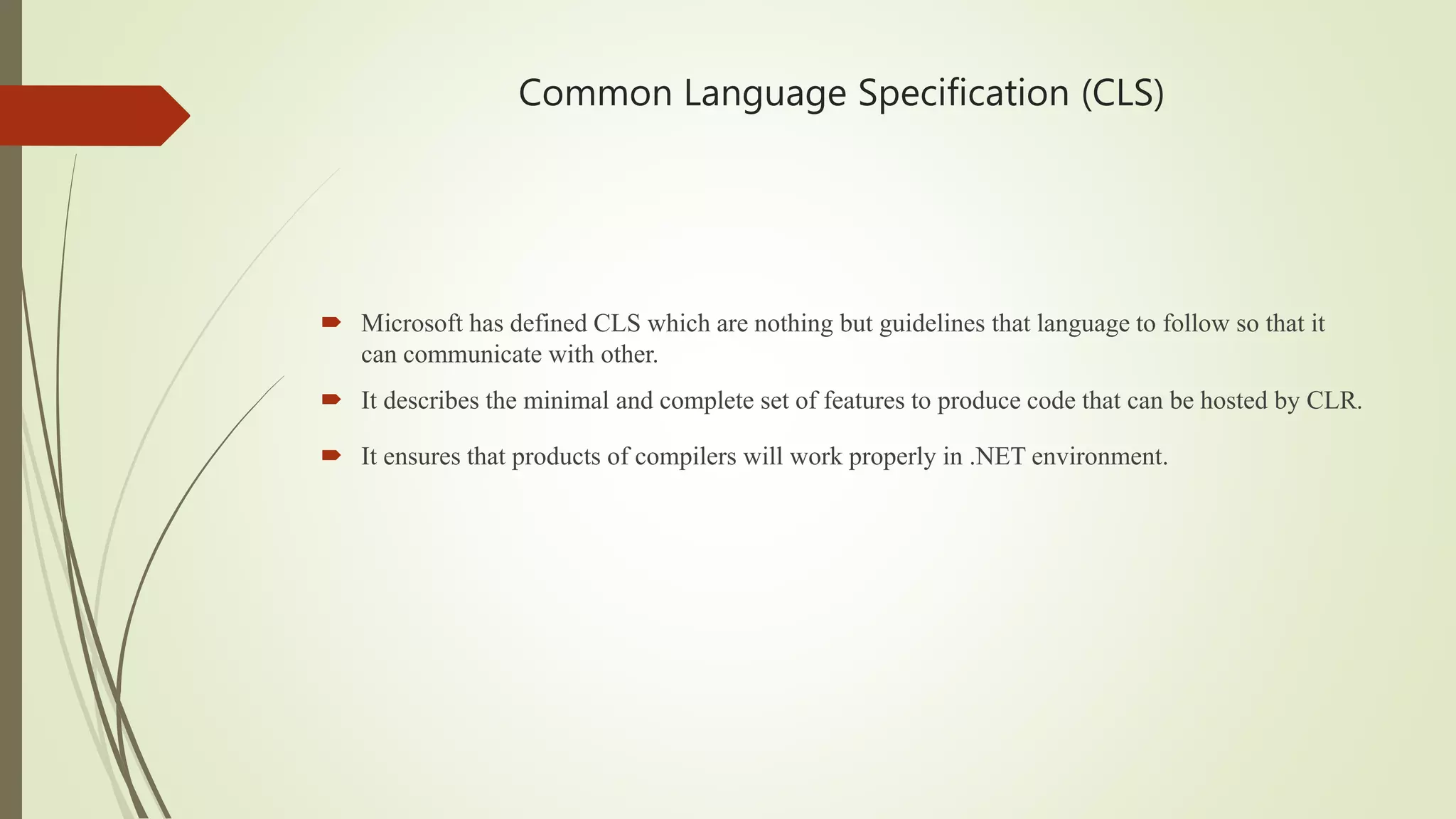The document discusses the main components of the .NET framework. It describes the Common Language Runtime (CLR) environment that executes .NET programs, the Common Language Specification (CLS) that defines language interoperability guidelines, and the Common Type System (CTS) that allows objects from different .NET languages to interact. It also mentions the Framework Class Library (FCL) that provides common methods and properties to .NET languages and how code is compiled to Microsoft Intermediate Language (MSIL) for execution by the CLR.

